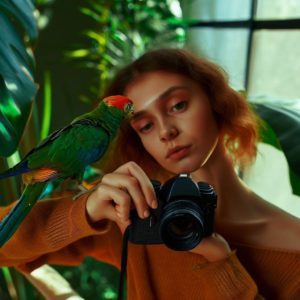Imagine looking into an underwater world, vibrant with color and teeming with life, every single day. A community of creatures who know nothing of traffic jams, deadlines, or pandemics. This tranquil spectacle could be just a glance away from your morning coffee, in the form of an aquarium. Join me on a journey through the fascinating world of aquatic pets, as we uncover the joys and challenges that come with their care.
Chapter 5: Ensuring Health and Happiness: Common Aquatic Pet Health Issues
Every pet parent wants their charges to live long, healthy, and happy lives. Our aquatic friends, while living in a different environment, are no exception. However, they can suffer from various health issues, many of which may not be immediately evident due to their watery homes. Early detection, proper treatment, and preventive measures are crucial to ensuring their well-being. Let’s dive into common diseases, their signs, preventive strategies, and when it’s time to seek professional help.
Ich: The White Spot Disease
Ich, or Ichthyophthirius multifiliis, is a common disease that can affect fish. It presents as white spots on the fish’s body and gills. The fish may also exhibit odd behaviors, like rubbing their bodies on rocks or plants. Treatment typically involves raising the tank temperature slightly and adding a specialized ich treatment to the water.
Fin Rot: The Silent Fin Destroyer
Fin rot is a bacterial or fungal disease that leads to the deterioration of a fish’s fins. Early signs include fraying or discoloration of the fins. If left untreated, it can lead to complete destruction of the fins. Treatment includes water changes, removal of visible debris, and medication.
Shell Rot: A Turtle’s Bane
Shell rot, common in turtles, is a fungal or bacterial infection that causes lesions on the turtle’s shell. It can lead to serious complications if not treated promptly. To treat shell rot, you will need to dry dock the turtle, clean the shell, and apply a topical antifungal or antibiotic.
Red Leg: A Deadly Disease for Amphibians
Red leg is a serious and often deadly disease for frogs and other amphibians. It’s characterized by redness, especially on the legs, lethargy, and loss of appetite. It requires immediate attention and typically requires antibiotic treatment under the guidance of a vet.
Molting Problems in Crustaceans and Invertebrates
Shrimp, crabs, and other invertebrates shed their exoskeletons as they grow, a process known as molting. Issues can arise if the new exoskeleton doesn’t form properly, often due to insufficient calcium or stress. Ensuring a diet rich in calcium and a stress-free environment can help prevent molting issues.
Prevention is Better Than Cure: Establishing a Healthy Environment
While it’s important to know how to treat diseases, prevention is always the best approach. Maintaining good water quality, providing a balanced diet, and reducing stress are key factors. Regular monitoring of your pets’ behavior and appearance can also lead to early detection of potential issues.
When to Seek Professional Help: Recognizing the Limits
While many common diseases can be treated at home, there are times when professional help is needed. Unresolved issues, severe symptoms, or complex diseases are best managed by a vet specialized in aquatic animals. Never hesitate to seek professional advice when your pet’s health is at stake.
Guardians of Health and Happiness
Our journey through the world of aquatic pet health serves as a reminder of the responsibility we bear as pet parents. While our aquatic friends may not express discomfort or illness in ways we’re familiar with, being observant, informed, and ready to act is vital. Armed with this knowledge, we can ensure our aquatic pets live out their lives in comfort and good health. Remember, the health and happiness of your underwater friends are in your hands, and they couldn’t ask for a better guardian.





